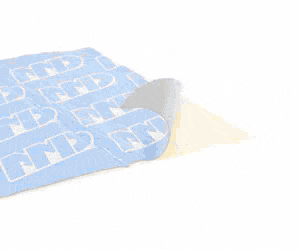
Many have learned the vast benefits of the Gen. 3 (G3) Hemi platform, most by way of some truly impressive dyno numbers that seem to keep getting reaffirmed. Hughes Engines, even with their lean towards vintage Mopar wedges, started to see the same writing on the wall when their stroked 6.1L Hemi topped 740 HP without a lot of effort:
Yes, we have read all the tech articles and information about the Gen 3 Hemi’s and they certainly look good, but until you build one and test it yourself, you’re not a big fan. This is a modern technology engine designed with computer aided technology, known as finite element design. Unlike the more common engines we deal with, like the S.B. and B.B. engines, there is no metal, cast iron, or aluminum used to “maybe help” strengthen the block or the heads.
The computer tells the designers exactly where support or strength is needed or not. So what you end up with is a very light, very strong design. But if you are used to looking at the older block and head design, you are still a little skeptical. This WAS our view of this engine. We had ported heads; sold cams and stroker kits forever but never built one up and dynoed it ourselves.

A longtime customer of ours, Zach Borman, talked us into building one for his race-only Dart. His basic idea was a 6.1 Hemi stroked to 426” with 5.7 Hemi heads, hydraulic roller cam, single 4 barrel carb. Then he threw us a ringer by adding the stipulation that this should run on pump gas.
We started with a new 6.1 block and a custom built stroker kit. From there we added a set of early 5.7 heads with our C.N.C.porting, one of our Hughes hydraulic cams, a Ritter 4 barrel intake, TTI 2” headers, a 950 cfm Holley, and a MSD electronic ignition system. Although we build a lot of pump gas engines, we were a little concerned about the compression ratio and the power expectations that Zach had of 680-690 HP.
680 HP from CI = 1.6 HP per cubic inch, that is like an 800 HP, 500 CI on pump gas—Oh yeah, that should be easy! Anyway, we race prepped the block, CNC’d the 5.7 heads, added larger valves and did some extra work. We then installed our 264º/268º @ .050”cam with the stock lifters & prepped rocker arms. And then we got to the Ritter intake manifold…..
We port and test a lot of heads (it gets addictive) and intake manifolds. Generally, when you bolt an intake onto ported heads, you expect to lose 25 to 45+ CFM due to the longer runners and design of the ports, etc. Well, with this Ritter “Hi-Ram” style intake P/N HUG5420, we only lost 10-12 CFM—Things are looking good. Maybe 680 HP won’t be as difficult to reach as we thought.
[…] As the dyno sheet shows (see below), the 680/690 HP goal was easily exceeded with pulls showing high 730’s and a couple of times touched 740 HP. This engine has 13:1 compression ratio and the power curves between using 110 octane race gas a BP 93 octane pump were virtually identical—it must be those dual plug Hemi heads! The test shown was with a 950 CFM carb and 50% 93 BR pump gas and 50% 115 octane Sunoco fuel.








